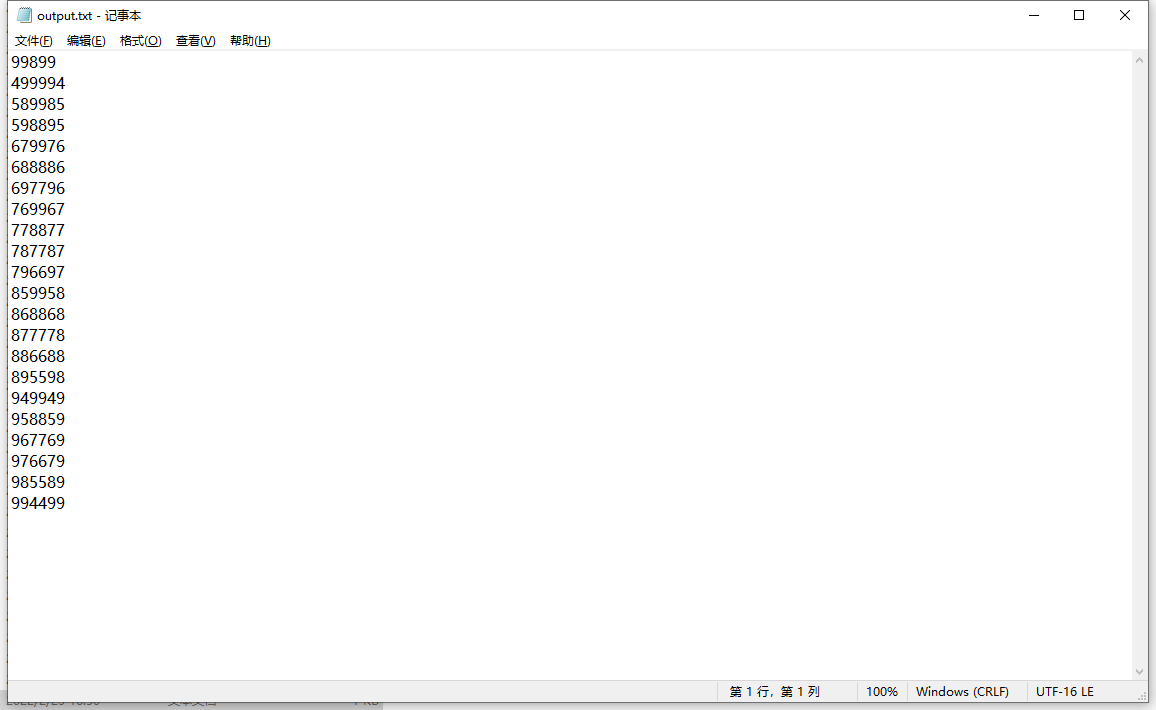前言:
在每一门编程语言中的都会有输入输出流这一说,通过输入输出流可以使我们写的程序与外界进行交互。当然了我们写程序的目的也就是对数据流进行处理,处理之后或对其进行保存,或将其释放。今天主要学习一下Python中的输入输出流,会对标准输入输出流、文件输入输出流展开介绍。
一、获取命令行参数
在执行Python脚本的时候可以对脚本从命令行传递参数,然后在脚本内接收,然后将每一个参数进行分离。
1.sys.argv
使用方法第一步:
import sys
使用方法第二步:
temp=sys.argv[1]
【在这里解释一下哦,sys.argv序列中索引0对应的是Python脚本名,剩下的才是传进来的变量】如下代码将会打印Python文件名与你传进去的参数(不传参接收的话会报错)
|
1
2
3
4
5
|
import sys
n1=sys.argv[0]
n2=sys.argv[1]
print(n1,type(n1))
print(n2,type(n2))
|
2.argparse
这个模块是解析命令行参数,生成帮助信息的Python标准模块
第一步(导包):
import argparse
第二步(创建ArgumentParser对象):
margs=argparse.ArgumentParser()
第三步(增加要解析的命令行参数信息):
margs.add_argument(参数名,默认值,类型,提示语句)
第四步(生成参数列表):
args=margs.parse_args()
二、最常用的输入输出
1.print函数【输出】
①print函数原型
解释参数列表:
*args代表不固定个参数
sep代表间隔默认为空格
end代表输出后结尾加换行
file代表是否将输出流重定向至文件。是一个文件描述符
末尾的pass代表占位符,因为python是一门语法格式化要求严格的语言
函数内、循环语内不可以留空一般使用pass占住位置。
|
1
2
3
4
5
6
7
8
9
10
11
12
13
|
def print(self, *args, sep=' ', end='\n', file=None):
# known special case of print
"""
print(value, ..., sep=' ', end='\n', file=sys.stdout, flush=False)
Prints the values to a stream, or to sys.stdout by default.
Optional keyword arguments:
file: a file-like object (stream); defaults to the current sys.stdout.
sep: string inserted between values, default a space.
end: string appended after the last value, default a newline.
flush: whether to forcibly flush the stream.
"""
pass
|
②使用print函数
print函数可以打印数字,运算加减法
可以输出字符串(字符串必须用双引号或者单引号引起来,否则解释器会不明白输入的是什么)
print可以将输出的内容直接定向到文件里面,open函数打开文件
创建python脚本不需要引入头文件,在使用某库时才import 第三方包。
|
1
2
3
4
5
6
7
8
9
10
11
12
13
|
# 1.输出数字
print(888)
# 2.输出运算式
print(1+3)
# 输出字符串
print('Hello World')
print('Hello World', "Hello Kity")
# print函数将内容直接输出到文件内
# 打开文件test.txt得到文件描述符F然后对文件进行输出。
F = open('test.txt', "a+")
print('Hello File', file=F)
F.close()
|
2.input函数【输入】
①input函数原型
- input函数是Python中常用的输入函数,可以读取黑窗口输入的数据
|
1
2
3
4
5
6
7
8
9
10
11
|
def input(*args, **kwargs): # real signature unknown
"""
Read a string from standard input. The trailing newline is stripped.
The prompt string, if given, is printed to standard output without a
trailing newline before reading input.
If the user hits EOF (*nix: Ctrl-D, Windows: Ctrl-Z+Return), raise EOFError.
On *nix systems, readline is used if available.
"""
pass
|
②使用input函数
|
1
2
3
4
5
6
7
8
9
|
# 输入函数 input
# 输入函数框内填写的是提示性语句
# 输入进来的内容刚开始都是字符串类型
q=input('请输入您的名字')
print(type(q))
print("我的名字叫:",q)
# input(可以直接进行类型转换)
q=int(input("请输入您的数据:"))
print(type(q))
|
三、sys包下的输入输出
从名字上来看这个包是关于系统的包,如果print与input没有办法满足你的需求的时候
不妨来看看sys.stdin与sys.stdout。print与input均是在后者的基础上封装而成的。
1.sys.stdin
比input更加标准的输入,可以使用他的方法readline()一次读入一行
读入的一行包含所有特殊字符与后来的换行,如果不想将换行读进
来就在readline后面加上strip()
代码如下:
|
1
2
3
4
5
6
|
#首先导包
import sys
#直接读取一行,包括末尾的换行符
str1=sys.stdin.readline()
#读取一行不包括最后的换行符
str2=sys.stdin.readline().strip()
|
2.sys.stdout
这个是比print函数更加官方输出,因为print是在他的基础之上进行封装实现的。对于Python而言sys.stdout.write(“Hello World”+"\n")与print(“Hello World”)效果是一样的。sys.stdout也支持输出的重定向。操作方法就是直接将标准输出
对象指向文件描述符,如果想要恢复标准输出,只需将输入输出对象再次指向标准输入输出对象即可.
代码如下:
|
1
2
3
4
5
6
7
8
9
|
import sys
#创建一个文件描述符
f1=open("log.txt","w")
#将标准输出重定向到文件log.txt内
sys.stdout=f1
#写入信息
sys.stdout.write("Hello")
#恢复重定向
sys.stdout=sys.__stdout__
|
四、命令行脚本的重定向
在生活中我们可能有这么一种需求,就是对自己写的代码进行测试,测试的时候如果数据量很大我们每次都进行输入的话非常麻烦,还会有一种需求就是打印日志,如果每次将日志打印到屏幕信息量大的话可能就会被刷新下去。由此我们的输入输出重定向来了。输入输出重定向一般就是将屏幕上的数据打印到文件内,或者需要从屏幕读取的数据改为从文件读取。
1.重定向标准输出
将脚本的执行结果直接输送进文件,永久保存
语法是:python 文件.py > 储存文件eg: python test.py > output.txt
代码如下:
|
1
2
3
4
5
6
7
8
9
10
11
12
13
14
15
16
17
18
19
|
import sys
num=int(input())
# num=int(sys.argv[1])
flag=True
for i in range(1,10):
for j in range(0,10):
temp=num-2*i-2*j
if temp<10 and temp>=0:
print(i*10000+j*1000+temp*100+j*10+i)
flag=False
for i in range(1,10):
for j in range(0,10):
temp=num-2*i-2*j
if temp>=0 and temp%2==0 and temp//2<10:
print(i*100000+j*10000+temp//2*1000+temp//2*100+j*10+i)
flag=False
if flag:
print(-1)
|
结果如下:

2.重定向标准输入
对于输入重定向与输出的语法几乎相同
python test.py < input.txt
总结:
使用Python进行输入输出的重定向,可以通过代码对数据进行排序、筛选等操作,可以起到过滤器的作用。在刷算法题的时候我们往往需要对输入输出更加的了解才能符合算法题给出的样例输入样例输出。由此可见掌握Python的输入输出对我们而言非常重要。